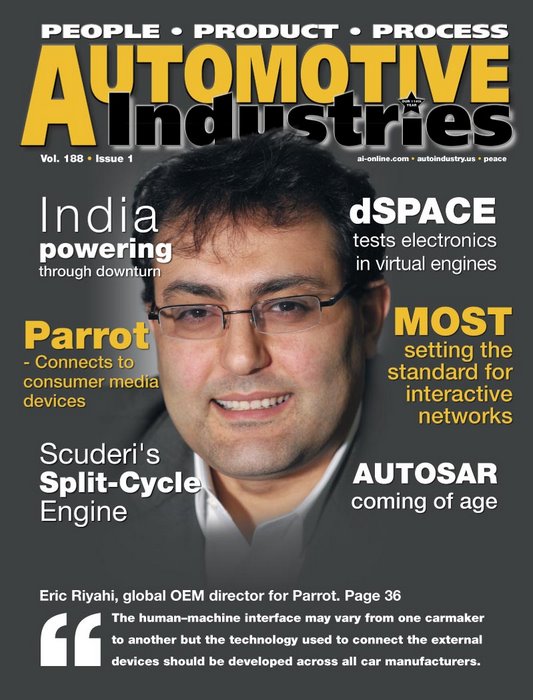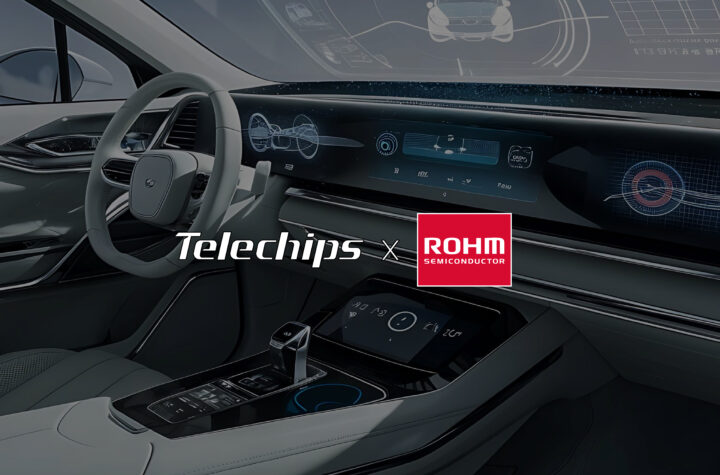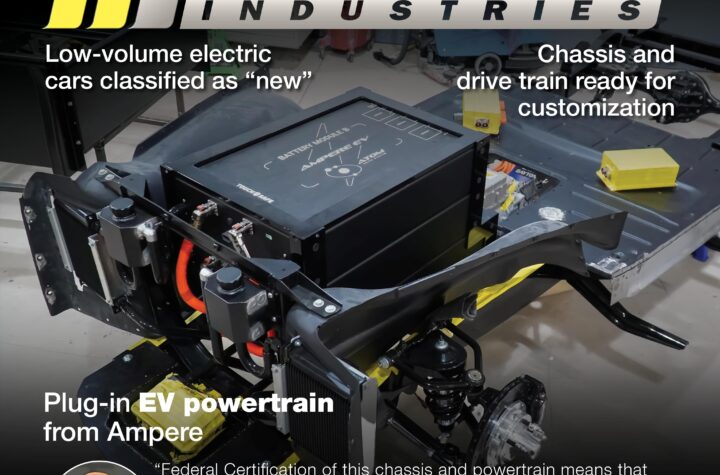
INTERVIEW – Parrot, a global leader in connectivity solutions, stands on the cutting edge of innovation. The company was founded in 1994 by Henri Seydoux as part of his determination to drive the inevitable breakthrough of consumer electronic devices into everyday life by creating high-quality, user-friendly systems.
Parrot, headquartered in Paris, currently employs 500 people worldwide, and generates 87% of its sales overseas. It stands as a fast-growth company (2007 revenues: 220 million euros, tripled since 2005) listed since 2006 on Euronext, Paris.
In the field of OEM equipment, Parrot has become a reference Tier Two supplier in automotive connectivity. Through the main Tier Ones, it supplies connectivity features to major car and equipment manufacturers.
Automotive Industries spoke to Eric Riyahi, OEM director for Parrot.
Eric joined Parrot in 2005. He is currently leading the OEM business unit globally. He graduated from INSEAD and Engineering School (EUDIL) in Lille, France. He started as an Electronic Engineer at Thomson then joined the Valeo Electronique group in 1994 as an applications engineer and then project manager. In 1999, Eric joined Visteon and served as a client account manager from 1999 to 2004, before being appointed as a product manager for Europe from 2004 to 2005.
AI: What is Parrot’s OEM situation and structure?
Eric Riyahi: In 2008, Parrot OEM was standing for 15% of Parrot’s overall revenue (229 M€) with over 3 million units sold. It focuses on supplying multimedia and phone connectivity solutions to the mains players in automotive electronics: car and equipment manufacturers, car radio manufacturers, navigation specialists (both portable and installed).
Our clients are global and we work with them all over the world. Our project teams are located in Detroit, Paris, Shanghai, Hong-Kong and Tokyo, to develop our business and manage locally the communication with our customers.
Today, Parrot has established a solid relationship with the main car manufacturers in Europe, Japan and Korea, through their Tier One suppliers, such as Visteon, Continental, Alpine or Pioneer.
AI: Please tell us about Parrot’s OEM solutions – especially your CK 5050+ module and your ASIC architecture design.
Eric Riyahi: Parrot’s main solutions are ASICs (Application-Specific Integrated Circuit) and Modules (a daughterboard containing our ASIC).
Their main features are :
• Hands-free telephony
• Phonebook synchronization
• Audio and video streaming
• Speaker-Independent Voice recognition
• Echo cancellation and noise reduction
• Connectivity to nomadic devices such as iPod™, USB sticks and USB players
ASICS are integrated in the host device (for instance a head unit or navigation unit) through a reference design, while modules connect in a standard manner to the host device (for instance a head unit).
Parrot also offers software only solutions for Linux, QNX and Windows CE. It allows customers to add Parrot software to their hosts’ microprocessors.
AI: Early in Parrot’s history, the company decided to focus on Bluetooth-based technologies – how has this benefited Parrot – especially in the OEM market?
Eric Riyahi: Parrot’s main focuses are Acoustics and Connectivity solutions via WiFi, Bluetooth and Voice Recognition.
Thanks to Bluetooth, car manufacturers willing to offer factory-fitted telephony went away from physical cradles to wireless connectivity. This allowed them to become compatible with a much larger number of phones on the market, thus improving their take rates. In that respect, we have been very successful with our Hands-free car kit concept.
Parrot’s leading position in the aftermarket area and its knowledge of the Automotive requirements (CAN, MOST) made it become the natural bridge between the customer world and the automotive industry. Parrot is now a reference Tier 2 supplier and offers a wider range of features, with multimedia connectivity combined with speaker-independent voice recognition.
AI: What are some of the new auto-related products in the pipeline and for which automotive clients are these being developed?
Eric Riyahi: We usually publicize products upon their starts of productions. However, we can let you know new Parrot applications will be launches by the end of 2009, in vehicles from Asian manufacturers and premium German brands.
AI: What are some of the emerging markets for Parrot and how different is your strategy there as compared to developed markets?
Eric Riyahi: We consider the automotive world globally: Our OEM activities are expanding to developing countries, as the automotive market does. We have strengthen our position in China by opening a representative office in Shanghai.
AI: How can car manufacturers face the growing diversity of devices on the market and ensure their clients’ vehicles remain compatible? What solution can Parrot offer?
Eric Riyahi: Today, it is impossible to test all nomadic devices available on the market with one said car system.
Nevertheless, Parrot has developed its gateway approach between the vehicle’s head unit and the outside world of nomadic devices. We maintain a best-in-class compatibility by permanently testing new CE devices on our existing and upcoming products. Using this knowledge, we develop software updates, which are offered to our customers twice yearly. The update is applied to the gateway only, and does not imply any changes on the head unit, making updates simple and affordable.















More Stories
Southfield Classics utilizes Ampere EV engineering to become the first manufacturer to achieve Low Volume Vehicle Manufacturer Certification
Sika – where battery storage technology for EVs, wind and solar meet
Battery pack solutions from PPG